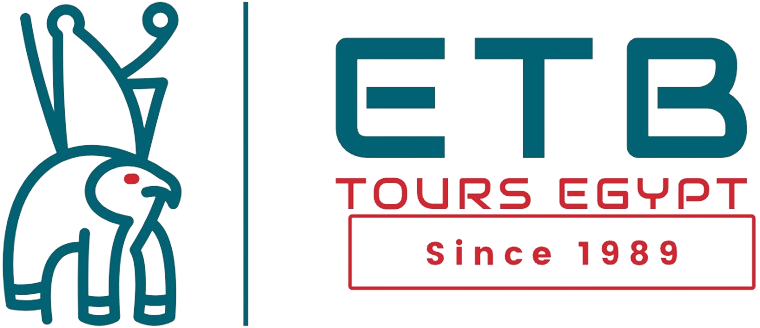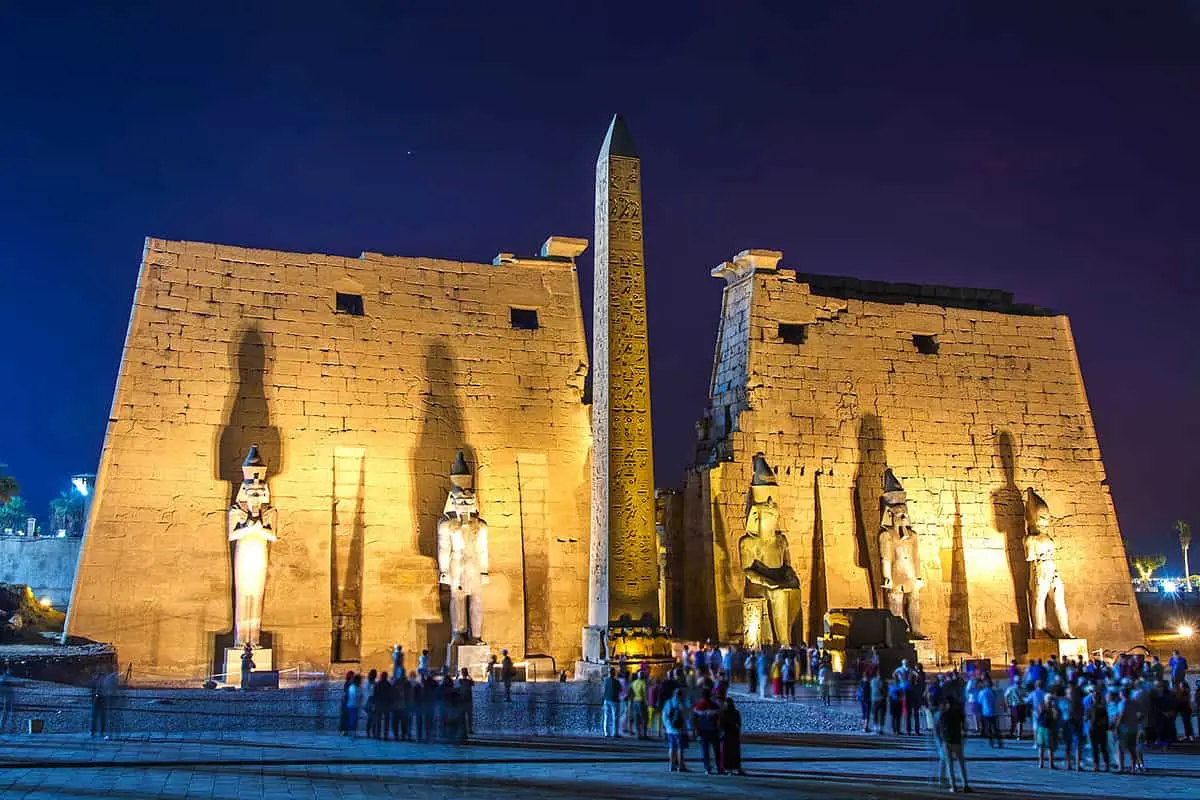Amun Temple Enclosure
Amun Temple Enclosure
Amun-Ra was the local god of Karnak (Luxor) and during the New Kingdom when the princes of Thebes ruled Egypt he became the state god. His temple reflected his new status. At its peak the temple had 421,000 head of cattle, 65 cities, 83 ships, 276,400 acres of land and 81,000 people. Despite being sacked by Assyrians and Persians the remains are still one of the worlds greatest archaeological sites, big, beautiful and wonderful and also there are another temples in luxor such as Karnak Temple which is a massive complex covering 2 sq km the size of 10 cathedrals and Luxor Temple which built by the new kingdom pharaohs amenhotp III and ramses and Temple of Seti I which famous for his beautiful temple of abydos and Mut Temple Enclosure which built by amenhotep III and Montu Temple Enclosure also in luxor
The Quay of Amun was where the big boats with the statues of the gods moored during festivals. Paintings from the tomb of Nakht and other sources show palaces to the north of the quay surrounded by gardens. On the east side a ramp leads down to the processional avenue of ram headed sphinx to the massive unfinished first pylon built during the reign of Nectanebo I (30th dynasty). The inner side of the pylon still has the mud brick construction ramp used to drag the stone blocks and there are also another landmarks in luxor you can visit such as Valley of the Queens which is at the southern end of the theban hill side and New Gurna and Medinat Habu which is fronted by the sleepy village of kom lolah and backed by the theban moutain and Luxor Museum which has an amazing collection of antiquities from the end of old kingdom to the mamluk period
Great Court
Behind the first pylon is the Great Court the largest area of the Karnak complex. To the left is the Shrine of Seti II with three small chapels where the sacred barques (boats) of Mut, Amun and Khonsu were kept before the Opet Festival. In the southeast corner is the well preserved Temple of Ramses III a miniature version of his temple at Medinat Habu. The temple plan is pylon, open court, vestibule with Osirid columns, hypostyle hall and barque chapels for Amun, Mut and Khonsu. In the center of the court is a 21m column with a papyrus shaped capital, one of ten and a small alabaster altar from the Kiosk of Taharka the 25th dynasty Nubian pharaoh and also there are another famous landmarks in luxor such as Tomb of Seti I which knwon as the best tomb in the valley and Tomb of Ramses VI (KV9) which is the grandest tomb in the valley of kings and Tomb of Tutankhamun KV (62) which is one of the smaalest in the valley and Tuthmosis III ( KV 34) which deeps in the hils Tomb of Tuthmosis IV ( KV 43) which one of the largest and deepest of the 18th dynasty and Tomb of Tawosret sethnakht (KV 14) which was the wife of of seti II
The second pylon was started by Horemheb the last 18th dynasty pharaoh and completed by Ramses I and Ramses II who also added three giant red granite statues of himself on either side of the entrance.
Great Hypostyle Hall
Beyond the second pylon is the amazing Great Hypostyle Hall one of the biggest religious monuments ever built. 5500 square meters of pure magic. 134 giant stone pillars shaped like papyrus plants representing the primordial swamp. Every summer the hall would flood with water. Originally the columns were painted and roofed so the inside was dark except along the main axis. The size and grandeur and the endless decoration is overwhelming so take your time and enjoy the showalso there are Tomb of Ramsis III ( KV 11) which also known as user maat ra and Tomb of Nefertari which is the best in theban necropolis and all of egypt
The hall was designed by Ramses I and built by Seti I and Ramses II. The raised relief in the north by Seti I is much more delicate than the sunken relief in the south by Ramses II. The scenes on the inner walls were for the priests and the royalty the outer walls for the pharaoh military prowess and his ability to bring order to chaos and also Tomb of Amenhotep II ( KV 35) which ruled egypt around 1400 BC and Tomb of Horemheb ( KV 57) where it is famous for its bas relief and
On the back of the third pylon built by Amenhotep III the pharaoh is sailing the sacred barque during the Opet Festival. Tuthmosis I created a small court between the third and fourth pylons where four obelisks once stood. Only the bases remain, except for one 22m high obelisk by Tuthmosis I and Tomb of Merenptah ( KV 8) which is the second largest valley of the kings and Tomb of Ramsis IV ( KV 2 ) which is near the entrance of valley of kings
Inner Temple
Beyond the fourth pylon is the Hypostyle Hall of Tuthmosis III built by Tuthmosis I in wood and altered by Tuthmosis III with 14 columns and a stone roof. Here stands one of the two 30m high obelisks erected by Queen Hatshepsut to Amun. The other obelisk is broken but the upper shaft lies near the sacred lake. The Obelisk of Hatshepsut is the tallest in Egypt its tip was originally covered in electrum. After Hatshepsut’s death her stepson Tuthmosis III erased all her records and Tomb of Titi which has corridor leading to the square chapel then a burail chamber and Tomb of Seti I which is famous for his beautiful temple at abydos
The fifth pylon is ruined and was built by Tuthmosis I. Then another colonnade and the small sixth pylon by Tuthmosis III. Two giant statues of Amun and Amunet were carved during Tutankhamun reign nearby.
The original Sanctuary of Amun the heart of the temple was built by Tuthmosis III. It was destroyed when the temple was sacked by the Persians and later rebuilt in granite by Philip Arrhidaeus Alexander the Great’s successor.
To the east of the shrine of Philip Arrhidaeus is the Middle Kingdom Court the oldest part of the temple where Sesostris I built a shrine. On the northern wall is the Wall of Records a list of the tribute paid to Amun from the subjugated lands.
Great Festival Hall of Tuthmosis III
Behind the Middle Kingdom Court is the Great Festival Hall of Tuthmosis III. It is an odd structure with stone columns carved to look like tent poles a reference to the pharaoh military campaigns. The columned vestibule beyond is called the Botanical Gardens and has relief scenes of the flora and fauna of Syria and Palestine and also there are another countries you can visit during your stay Egypt Tours provide you with many suggestions also you can travel with your family and spend quality time with them Egypt Family Tours give you many offers to choose from and also if you want to be in a private tour we can provide this for you through Egypt Private Tours give you also many offers to choose from and also we have safari tours if you want to try and book it you can do this through Egypt Safari Tours provide you numerous suggestions to choose from and also there are tours for women only you can book it also through Egypt Women Tours give you also many recommendations to choose from
Secondary Axis of the Amun Temple Enclosure
The courtyard between the Hypostyle Hall and the 7th pylon, built by Tuthmosis III, is called the cachette court. Thousands of statues and temple furniture were buried here around 300 BC and were discovered in 1903. Most were sent to the Egyptian Museum in Cairo but some are in front of the 7th pylon and also we have many tours to choose from in many countries you can book it through Egypt Tours Packages give you may recommendations to choose from also Egypt Vacation Packages give you many offers to choose from and aslo egypt has so many landmarks to visit and so many activities to do Things To Do In Egypt provide you many suggestions to choose from
The 8th pylon, built by Hatshepsut, is the oldest part of the north-south axis of the temple. East of the 7th and 8th pylons is the sacred lake where the priests of Amun bathed for ritual purity. Nearby is the Fallen Obelisk of Hatshepsut and a giant scarab dedicated by Amenhotep III to Khepri, a form of the sun god and also you can try to visit also aswan through Aswan Day Trips provide you with many recommendations also hurghada has so many places to visit and you can travel through Hurghada Day Tours give you also many offers and also the nile cruise you will have so much fun there you can book it through Nile Cruise Luxor Aswan give you many offers to choose from and Dahabiya Nile Cruise also provide you with many suggestions
In the south west corner of the enclosure is the Temple of Khonsu, god of the moon and son of Amun and Mut. The temple was mostly built by Ramses III and is north of Euergetes’ Gate and the avenue of sphinxes to Luxor Temple. The temple pylon leads to a hypostyle hall with columns carved with Ramses XI and the High Priest Herihor. The next chamber housed the sacred barque of Khonsu.
 English
English  Spanish
Spanish  Chinese
Chinese  French
French  Portuguese
Portuguese  Italian
Italian  Russian
Russian  Czech
Czech  German
German  Japanese
Japanese 







